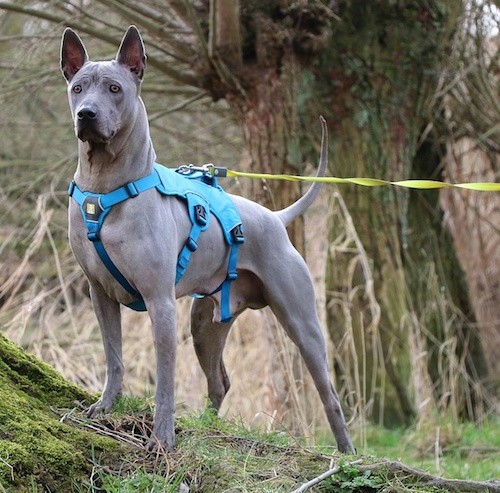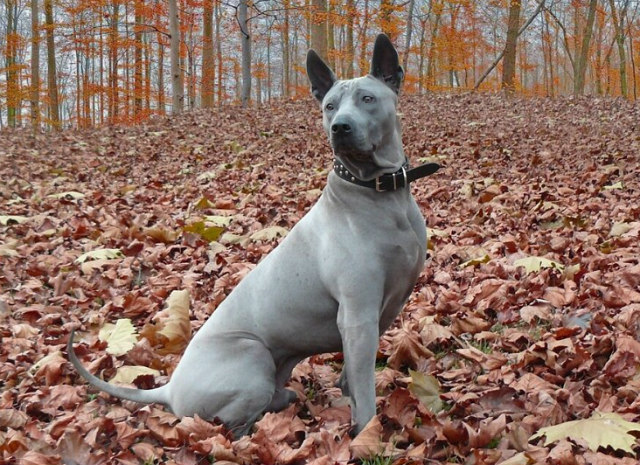The Thai Ridgeback is a dog recently established as a standardized breed. The breed was formerly unknown outside Thailand but is gaining notice in the Western world. They are also known as a Mah Thai Lang Ahn. The Thai Ridgeback is one of only three breeds that has a ridge of hair that runs along its back in the opposite direction to the rest of the coat. The other two are the Rhodesian Ridgeback and the Phu Quoc Ridgeback.
Appearance
The Thai Ridgeback is a muscular, medium-sized pariah-type dog with a wedge-shaped head, triangular-shaped prick ears, and a very short, smooth coat. It has a pronounced ridge on its back formed by the hair growing in the opposite direction that extends from behind the withers to the hips. Puppies are occasionally born ridgeless. Thai Ridgebacks have a muscular and streamlined body, making them extremely agile. The tail is carried upward called a sickle or swordtail. Its forehead wrinkles with enormous expression. Like many eastern breeds, the Thai Ridgeback has retained a ‘scissor jaw’ where upper and lower teeth interlock when the jaw bones clampdown. The tongue can be black or have black marks. Eyes are almond-shaped and brown but may be amber in blue dogs. The ears are set low and point slightly outward. The ears stand up progressively during the puppy growth period; they are not cropped. The back is straight and level. The coat is short, hard, and straight. Due to the length and density of the coat shedding is minimal, occurring once or twice yearly. Because this breed does not have an undercoat the hair does not usually bother people allergic to other breeds of dogs. The coat must be solid colours of blue, black, red or fawn with a black mask being acceptable on reds. However, brindle and white are also found but are not acceptable colours. For international show and competition, shoulder height should be 22-24 inches (56–61 cm) in males and 20-22 inches (51–56 cm) in females. The weight averages 35–55 lbs in females and 40-60 lbs in males.
Eight distinctive ridge patterns have been identified: needle, feather, arrow, lute, violin, bowling pin, leaf, and saddleback. All patterns are acceptable but must be clearly defined and symmetrical. The broader the ridge, the more highly it is prized.
History

The origin of the Thai Ridgeback is undocumented, but the breed was developed in eastern Thailand. The history of the breed is the subject of numerous hypotheses.
The other existing pure breeds of ridgeback dog are the Rhodesian Ridgeback from Africa and the Phu Quoc Ridgeback from Vietnam, which is somewhat smaller than the Thai Ridgeback. Based on the genetic-based hypothesis, both Thai Ridgeback Dog and Phu Quoc Dog are likely to be descended from Funan Ridgeback Dog which originated over 1,000 years ago in Funan Era of the region. The descendant of the Hottentot Dog or Ari Dog (as called by the tribe), a known African ridge-bearing ancestor of the Rhodesian Ridgeback, is now found as Africanis. The gene that causes the ridge has been inherited from a common ancestor: “The geographical origin of the ridge present in Ridgeback dogs is still a mystery, thus solid proof has now been provided that the ridge mutation in Ridgeback dogs is identical by descent and the likelihood of parallel mutations occurring in Asia and Africa (Epstein, 1937) can, therefore, be rejected.”
